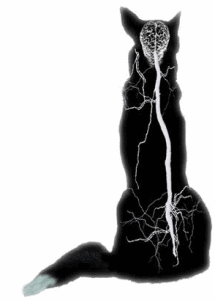
 Similar to human medicine, in the field of veterinary medicine, neurology is recognized as a separate specialty. However, it is clear from recent publications that the field of veterinary neurology is on the rise, with almost 9000 publications in total over the past 15 years.
Similar to human medicine, in the field of veterinary medicine, neurology is recognized as a separate specialty. However, it is clear from recent publications that the field of veterinary neurology is on the rise, with almost 9000 publications in total over the past 15 years.
Co-author Jacques Penderis confirmed that “Veterinary neurology is a flourishing specialization in Europe. Neurological diseases are common in veterinary practice and the level of understanding these conditions has dramatically increased over the past few decades.”
Thus, there is a growing pressure for undergraduate students to be taught the basic principles of the discipline, recognize the clinical signs of neurologic disease, manage neurologic emergencies, and know when to refer cases to specialists or have the necessary skill base to allow them to start a specialist training themselves.
Although learning objectives for veterinary neurology have been defined in many individual universities, Europe wide detailed learning objectives for veterinary neurology as well as other subjects have not yet been defined.
There is a phenomenon described called “Neurophobia” around students
Andrea Tipold, University of Veterinary Medicine Hannover
To address this issue, researchers from the TiHo Hannover, the University Witten/Herdecke, the Royal Veterinary College, London, and the University of Glasgow, in cooperation with the European College for Veterinary Neurology (ECVN) developed this list in a two-staged Delphi study.
Once the college’s curriculum working group had developed a list of 140 learning objectives in neurology, 142 European Society of Veterinary Neurology (ESVN) members and 127 ECVN members were invited to rank these objectives in a taxonomy of: not necessary, beginner level, advanced level and expert level. With a high return rate of 62%, this allowed the authors to draw solid conclusions in respect to defining undergraduate neurology learning objectives, and a list of 98 objectives for the undergraduate curriculum was created.
First author Yu-Wei Lin said “We found the three most important day-one skills for veterinary neurology: interpret laboratory tests, perform a neurological examination and establish a neuroanatomical localization.”

Co-author and BMC Veterinary Research Section Editor, Holger Volk added that “It is a success for education in neurology that we now have a list of the three most important diseases of the central nervous system (epilepsy, intervertebral disc disease and inflammatory diseases) and of the peripheral nervous system (polyradiculoneuritis, myasthenia gravis and toxic neuropathies).”
“There is a phenomenon described called “Neurophobia” around students”, said co-author Andrea Tipold; perhaps relating to the increased expectations from pet owners for their animals to receive specialized care. “Undergraduates may profit of a defined list of learning objectives and the use of different methods to teach and learn neurology.”
It is believed that such a comprehensive and effective curriculum will be a valuable tool, and investment in such a curriculum with one-off development and continual correction can result in enormous benefits for undergraduates and lecturers in terms of time, effectiveness and competency.
This study is interpreted by co-author Jan P. Ehlers as a “pilot study that might also be a role model for the development of European learning objectives in other specific areas in veterinary medicine.”
In addition to this first part about learning objectives for the undergraduate curriculum, in a second part of the study, a list of learning objectives for the postgraduate phase, the residency programme, was developed. In this upcoming BMC Veterinary Research publication it is shown which competencies advanced practitioners and ECVN Diplomates are supposed to have gained.

Such a great approach. This is very helpful for neurology student.
grateful for sharing this with us. I like your approach. next article awaited…….